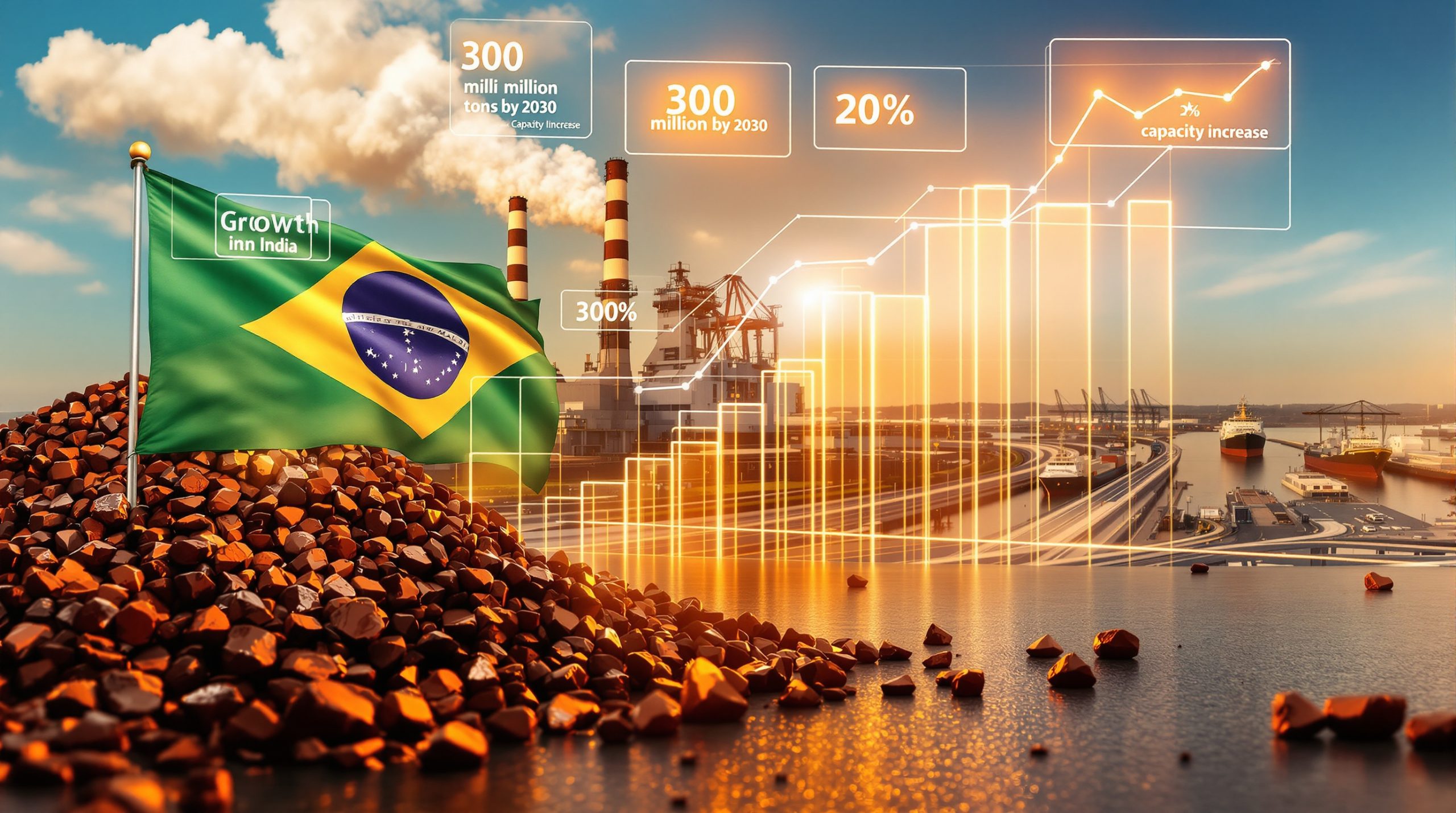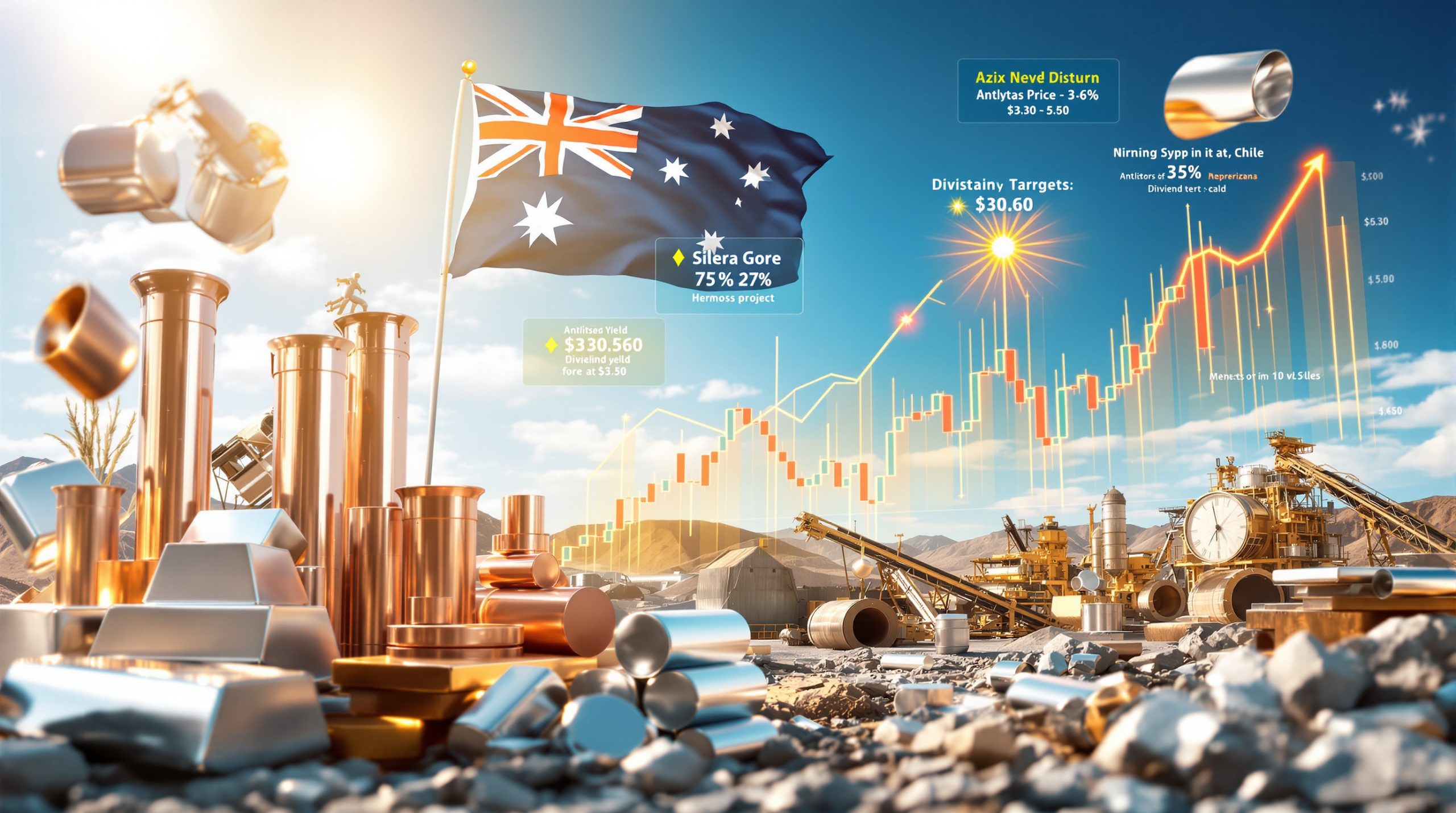What is the Sibanye-Stillwater Petition for US Tariffs on Russian Palladium?
On July 31, 2025, South African mining company Sibanye-Stillwater filed a petition requesting the US government impose tariffs on Russian palladium imports. This marked a significant development in the global platinum group metals (PGMs) market, potentially reshaping international supply chains and price dynamics for this critical industrial metal.
The company's petition specifically targets what it describes as unfairly priced Russian palladium entering the US market. According to Sibanye-Stillwater CEO Neal Froneman, "We believe that Russian palladium imports are being sold below market prices due to various factors, beginning primarily after the Russian invasion of Ukraine in 2022."
The Tariff Proposal Background
The petition represents a strategic move by one of the world's largest PGM producers to protect its interests in the North American market. Sibanye-Stillwater operates significant palladium mining operations in Montana and maintains extensive PGM assets in South Africa as well.
Froneman's statement emphasized the importance of the petition for the domestic industry: "Obtaining relief from dumped and subsidized Russian imports will give Sibanye-Stillwater, its employees, and the entire US PGM industry, an opportunity to compete on a more level playing field."
The US government's review process for this petition is expected to take approximately 13 months for a final determination, meaning a decision would likely arrive in late 2026. This extended timeline creates a period of uncertainty for market participants and potential volatility in palladium prices.
Current Market Dynamics
The petition comes during a period of significant movement in the palladium market. Prices have increased 31% in 2025 year-to-date, reversing several years of decline. This rally has been supported by reduced South African production and limited spot market liquidity.
Russia, primarily through mining giant Nornickel, controls approximately 40% of global palladium production, giving it substantial influence over market conditions. The United States and China represent Russia's two largest export markets for palladium, with American manufacturers heavily dependent on imports to meet industrial demand.
Trade data highlights the significance of Russian palladium to the US market. According to figures from Trade Data Monitor cited by Reuters, Russian palladium imports to the US increased 42% year-on-year to over 500,000 troy ounces during January-May 2025. This surge in Russian material has intensified competitive pressures on domestic producers like Sibanye-Stillwater.
Russia and South Africa currently serve as the top palladium suppliers to the United States, establishing a concentrated supply base that presents both opportunities and challenges for US policy makers evaluating the tariff petition.
How Would Tariffs Impact Global Palladium Markets?
The implementation of US tariffs on Russian palladium would likely trigger significant market realignment rather than fundamentally altering global supply-demand balances. The metal would continue to be produced and consumed at similar levels, but the patterns of international trade would shift substantially.
Analysts anticipate that Russian palladium would be diverted to alternative markets, particularly China, while non-Russian material would preferentially flow to the United States. This reshuffling could create temporary dislocations and price arbitrage opportunities between different regional markets.
Price Volatility Concerns
Precious metals analysts at Heraeus have specifically warned about potential market disruption: "Although placing duties on Russian metal would not necessarily impact the market balance of palladium, it could result in the re-routing of global physical metal flows, leading to price volatility."
This volatility would emerge from several factors:
- Physical delivery disruptions during supply chain reconfiguration
- Premium pricing for non-Russian material in the US market
- Potential discount pricing for Russian material in non-US markets
- Hedging and speculative activity anticipating these changes
- Uncertainty about regulatory enforcement mechanisms
The palladium market has already experienced considerable price movement in 2025, with values increasing 31% year-to-date. According to a Reuters poll, analysts forecast palladium prices will rise in 2025 for the first time in four years, supported in part by platinum's rally and production challenges in South Africa.
Supply Chain Disruptions
Any tariff implementation would force US buyers to reconfigure supply chains that have been established over decades. Automotive manufacturers, chemical companies, and electronics producers would need to identify alternative sources, potentially paying premiums for non-Russian metal.
The reshuffling of global palladium flows would create winners and losers:
- Chinese buyers might benefit from increased Russian supply diversion to their market
- South African, North American, and Zimbabwean producers could gain market share in the US
- US manufacturers might face higher input costs during the transition
- Trading companies with global logistics capabilities could capitalize on arbitrage opportunities
The automotive industry, as the largest consumer of palladium for catalytic converters, would be particularly affected by any supply chain disruptions. Automakers typically maintain close relationships with specific PGM suppliers to ensure consistent quality and delivery reliability.
Why is Sibanye-Stillwater Advocating for Tariffs?
Sibanye-Stillwater's petition comes against a backdrop of significant financial challenges for the company. Understanding these circumstances provides important context for evaluating the strategic objectives behind the tariff request.
Financial Challenges
The South African mining giant recorded its second consecutive full-year loss in 2024, highlighting the pressure on its operations from depressed PGM prices in recent years. More specifically, the company wrote down $500 million of its US palladium assets due to low prices, demonstrating the direct financial impact of market conditions on its North American operations.
The tariff request represents a strategic attempt to improve profitability in challenging market conditions. By targeting what the company describes as "dumped and subsidized Russian imports," Sibanye-Stillwater aims to create pricing conditions that would support the viability of its US mining operations.
Financial analysts note that the company's Montana operations have higher production costs than some Russian mines, making them particularly vulnerable to price competition. The requested tariffs would effectively raise the floor price for palladium in the US market, potentially allowing these higher-cost operations to remain economically viable.
Strategic Industry Considerations
Beyond immediate financial concerns, Sibanye-Stillwater's petition emphasizes broader strategic considerations related to maintaining viable domestic PGM production in the United States. The company frames the issue as supporting long-term US supply security for critical minerals strategy.
The petition highlights several strategic arguments:
- Maintaining domestic production capacity for materials critical to automotive manufacturing
- Preserving skilled mining jobs in the United States
- Reducing dependence on potentially unstable foreign sources
- Supporting allies like South Africa rather than geopolitical competitors
Sibanye-Stillwater operates significant PGM assets in both South Africa and the United States, giving it a unique perspective on international market dynamics. The company has positioned itself as a reliable Western supplier of critical minerals, contrasting with Russian producers that have faced various international sanctions in other sectors.
What Makes Palladium a Critical Metal?
Palladium's strategic importance extends far beyond its market price, as the metal plays an essential role in multiple industries and technologies that underpin modern economies. Understanding these applications helps explain why governments and companies pay close attention to supply security.
Industrial Applications
Palladium's primary use is in catalytic converters for gasoline-powered vehicles, where it serves as the key catalyst that converts harmful emissions into less toxic substances. This environmental application accounts for approximately 85% of palladium demand, making the automotive industry the dominant consumer.
The metal's catalytic properties make it invaluable for:
- Converting carbon monoxide to carbon dioxide
- Transforming unburned hydrocarbons to carbon dioxide and water
- Reducing nitrogen oxides to nitrogen
- Meeting increasingly stringent emissions standards worldwide
Beyond automotive applications, palladium serves critical functions in other industries:
- Electronics manufacturing, particularly for multilayer ceramic capacitors
- Dental alloys for crowns and bridge work
- Chemical production catalysts
- Hydrogen purification technologies
- Jewelry manufacturing
These diverse applications make palladium essential to multiple supply chains, with few viable substitutes offering comparable performance characteristics.
Supply Concentration Risks
The global palladium market faces significant supply concentration risks that differentiate it from many other industrial metals. Production is dominated by just two countries, with Russia (approximately 40%) and South Africa together controlling roughly 70% of global supply.
This geographical concentration creates inherent supply security concerns for consuming nations like the United States. Political instability, labor disputes, power supply challenges, or international sanctions affecting either major producer could rapidly impact global availability.
Unlike other Russian commodities, palladium has so far avoided both US sanctions and import tariffs despite tensions following Russia's Ukraine invasion. This exception reflects the metal's critical importance to US manufacturing and the limited alternative supply sources immediately available.
The specialized nature of PGM mining further complicates supply diversification efforts. These metals typically occur in specific geological formations, with new mine development requiring significant capital investment and extended timeframes measured in years or decades.
How Does This Fit into Broader US-Russia Trade Relations?
The palladium tariff petition introduces a new dimension to the already complex economic relationship between the United States and Russia. This potential trade action would affect a strategic mineral that has previously been exempted from broader economic measures.
Geopolitical Context
The tariff request comes amid ongoing US‑China trade tensions and frictions with Russia over the Ukraine conflict, which began with Russia's invasion in 2022. While the US has implemented multiple rounds of sanctions targeting various Russian industries and individuals, PGMs have notably remained exempt from these measures.
This exemption reflects careful policy balancing by US authorities, weighing:
- The critical nature of these metals for US manufacturing
- Limited alternative supply sources in the short term
- Potential economic impacts of supply disruption
- Strategic mineral security considerations
The Biden administration must evaluate this new tariff petition against this complex backdrop, considering not only the economic case presented by Sibanye-Stillwater but also broader geopolitical objectives and domestic manufacturing interests.
The petition's timing also coincides with increased focus on critical mineral supply chains in US policy discussions. Recent legislation and executive orders have emphasized reducing dependency on potentially hostile nations for materials deemed essential to economic and national security.
Policy Considerations
US trade authorities evaluating the petition face a multi-faceted decision framework that extends beyond straightforward economic analysis. They must determine whether Russian palladium truly constitutes "dumping" under trade laws, which requires demonstrating that the metal is being sold below fair market value.
Key considerations include:
- Whether Russian government subsidies or other support mechanisms artificially lower palladium prices
- The extent of material injury to domestic producers
- Potential impacts on downstream US manufacturers who use palladium
- Effects on consumer prices and inflation
- Precedent-setting implications for other critical minerals
The case highlights inherent tensions between free trade principles and national security considerations in US trade policy. While open markets typically promote economic efficiency, concentrated dependence on potentially hostile suppliers creates strategic vulnerabilities that may warrant protective measures.
What Are the Potential Outcomes of the Tariff Decision?
The 13-month review timeline for the Sibanye-Stillwater petition creates an extended period of uncertainty for palladium market participants. Understanding potential scenarios can help stakeholders prepare for various outcomes.
Scenario Analysis
An approval scenario resulting in significant tariffs would likely redirect Russian palladium flows away from the US market, primarily toward China as the next largest consumer. This would create a two-tier global market with different pricing dynamics:
- Premium pricing for non-Russian material in the US market
- Potential discount pricing for Russian material in non-US markets
- Increased transportation and logistics costs during supply chain reconfiguration
- Enhanced market position for South African, North American, and Zimbabwean producers in the US
A rejection scenario would maintain the status quo market structure but potentially accelerate market share challenges for non-Russian producers. Sibanye-Stillwater might need to reevaluate the viability of its US operations if price pressures persist.
The most likely outcome may be partial measures that attempt to balance competing interests. These could include:
- Moderate tariff levels that influence but don't prohibit Russian imports
- Quotas rather than percentage-based tariffs
- Targeted measures affecting specific Russian producers
- Phased implementation allowing for supply chain adjustment
The decision timeline extending into mid-2026 creates prolonged market uncertainty, which itself may influence investment decisions in both mining operations and palladium-consuming industries.
Market Adaptation Strategies
Regardless of the final tariff decision, market participants are likely to implement adaptation strategies to mitigate risks associated with supply concentration and potential policy changes.
Mining companies may accelerate recycling operations to recover more palladium from spent catalytic converters and other sources. Recycling already provides approximately 25-30% of annual palladium supply, and this percentage could increase with additional investment in collection and processing infrastructure.
Automotive manufacturers facing potential supply disruptions or price increases have several potential responses:
- Accelerating shifts toward platinum or non-PGM catalyst technologies where technically feasible
- Increasing palladium thrifting efforts to reduce per-vehicle usage
- Developing direct supply relationships with non-Russian producers
- Building strategic inventories to buffer against short-term disruptions
Supply chain diversification efforts will likely intensify regardless of the final tariff decision, as both governments and companies recognize the risks inherent in concentrated supply sources for critical materials.
Price hedging strategies will become increasingly important for industrial consumers seeking to manage volatility risks. Advanced forward contracting, options strategies, and strategic stockpiling may all play roles in comprehensive risk management approaches.
FAQ About US Tariffs on Russian Palladium
Would tariffs on Russian palladium affect consumer prices?
Tariffs could potentially increase costs for products containing palladium, particularly automobiles with catalytic converters. However, the impact would likely be minimal at the consumer level since palladium represents a small portion of overall vehicle costs. Manufacturers might absorb some cost increases to maintain competitive pricing, especially in the price-sensitive automotive sector.
How might Russia respond to potential US palladium tariffs?
Russia could redirect palladium exports to other markets, particularly China, or potentially implement retaliatory measures on US exports. The country's dominant position in global palladium supply gives it significant leverage, but this leverage is balanced by Russia's economic interest in maintaining export revenues from mineral sales.
What alternatives exist if Russian palladium becomes more expensive?
Manufacturers have several potential responses to higher Russian palladium prices:
- Increasing palladium recycling efforts
- Substituting with platinum where technically feasible
- Accelerating development of alternative catalyst technologies
- Sourcing from South African and North American producers
- Implementing more aggressive palladium thrifting in catalytic converter designs
Each alternative comes with technical challenges and transition costs that would need to be evaluated against the increased price of Russian material.
How would South African producers benefit from US tariffs on Russian palladium?
South African miners like Sibanye-Stillwater would likely see improved market access in the US and potentially higher prices for their palladium production, improving profitability for their operations. As the second-largest palladium producer globally, South Africa is positioned as the most significant alternative source if Russian material becomes less competitive in the US market.
Comparative Analysis: Global Palladium Production Sources
| Producer | Global Market Share | Annual Production (est.) | Primary Markets | Supply Risk Factors |
|---|---|---|---|---|
| Russia (Nornickel) | ~40% | ~2.6M oz | US, China, EU | Geopolitical tensions, potential sanctions |
| South Africa | ~30% | ~2.0M oz | Global | Labor issues, power supply challenges |
| North America | ~15% | ~1.0M oz | Domestic, EU | Limited expansion potential |
| Zimbabwe | ~5% | ~0.3M oz | Regional, China | Political instability, infrastructure |
| Other Regions | ~10% | ~0.7M oz | Various | Varied by region |
Expert Insight: "Although placing duties on Russian metal would not necessarily impact the market balance of palladium, it could result in the re-routing of global physical metal flows, leading to price volatility." – Analysts at Heraeus
Future Outlook for Palladium Markets Under Potential Tariffs
The palladium market faces a period of transition regardless of the specific tariff decision outcome. Several long-term trends will shape the metal's future beyond immediate trade policy considerations.
Long-Term Supply Considerations
Development of new non-Russian palladium sources would require significant investment and time, with major new mines typically taking 7-10 years from discovery to production. This timeline means that any supply diversification strategy must account for extended development periods.
Recycling rates will likely increase as a percentage of total supply regardless of tariff decisions. The growing vehicle fleet containing palladium catalysts represents an expanding "above-ground mine" that becomes increasingly economical to exploit as primary ore grades decline and environmental regulations tighten.
Mining companies may accelerate exploration for PGM deposits in politically stable jurisdictions, particularly targeting:
- Expansion of existing operations in North America
- New project development in Australia and select African nations
- Potential for discoveries in underexplored regions with similar geology to known deposits
Supply diversification will remain a strategic priority for industrial consumers, particularly automotive manufacturers dependent on reliable catalyst material supplies to meet emissions regulations.
Technological Shifts
The automotive industry's gradual transition toward electric vehicles may eventually reduce palladium
Ready to Spot the Next Big Mineral Discovery?
Discover potential high-growth opportunities in the mining sector with Discovery Alert's proprietary Discovery IQ model, which delivers real-time alerts on significant ASX mineral discoveries. Visit our discoveries page to explore how historic mineral finds have generated substantial returns and start your 30-day free trial today.




